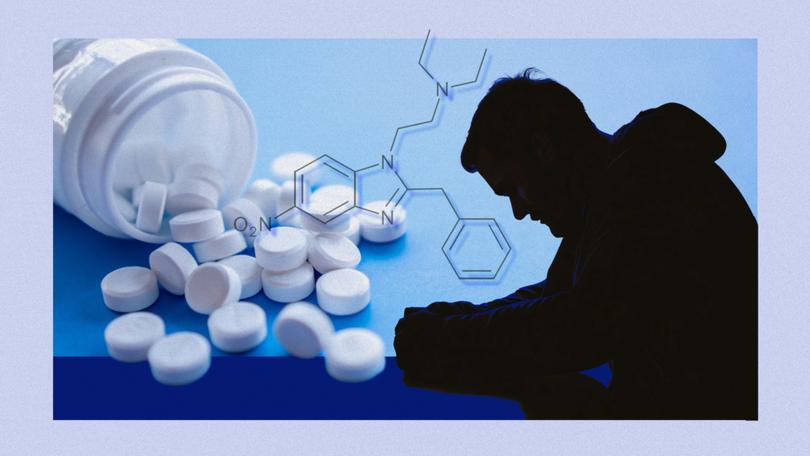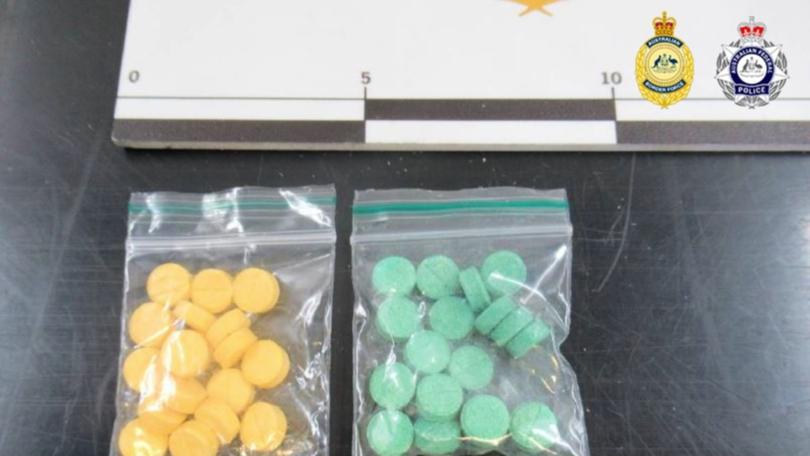Nitazenes drug sparks warnings from health workers and experts as powerful opioid arrives in Australia

Frontline health workers and drug experts have warned Australia is unprepared for a possible wave of overdoses linked to an emerging drug that is up to a thousand times more potent than morphine.
Nitazenes have been detected in every state and territory in Australia bar Tasmania and linked to at least 16 deaths as well as clusters of overdoses in the past couple of years.
The emerging class of synthetic opioids has been found in a variety of drugs including heroin, cocaine, ketamine and MDMA.
Sign up to The Nightly's newsletters.
Get the first look at the digital newspaper, curated daily stories and breaking headlines delivered to your inbox.
By continuing you agree to our Terms and Privacy Policy.Sydney Medically Safe Injecting Centre medical director Marianne Jauncey said nitazenes were “extremely lethal”.
“The concern from the frontline is we know what needs to be done,” said Dr Jauncey.
“We don’t want to sleepwalk into an extraordinarily serious situation that could be around the corner.”
Dr Jauncey said drugs were often a difficult and emotive topic for governments but said more supervised injecting and drug testing facilities were needed to prevent unnecessary overdoses and deaths.
It is unclear why dealers have started cutting their drugs with nitazenes. They are unlikely to ever disclose the reason to researchers and authorities.
The Taliban banned the production of opium in Afghanistan in 2022, disrupting the global supply of heroin and potentially incentivising the dilution of street drugs.
But most of Australia’s heroin comes from southeast Asia, particularly Myanmar.

St Vincent Hospital clinical director of drug and alcohol services Nadine Ezard said the global availability of plant-based opiates was dwindling and said she expected synthetic and novel versions to pop up around the world.
“Learning from the experience overseas where some countries have experienced a number of clusters we need to be on alert for the presence of nitazene in the opioid supply,” said Dr Ezard, who is a professor at National Drug and Alcohol Research Centre.
“There’s no reliable consumer tests for people.”
Dr Ezard recommended people carry Naxolone on them, even if they weren’t taking opioids, in case the emerging drug was present.
Another issue is that strips used to detect fentanyl in substances through routine drug testing will not detect nitazenes.
Nitazenes were first detected in Australia by the NSW Poisons Information Centre in early 2021. Last month they were linked to a sharp increase in overdoses across the Penrith region in Sydney’s northwest.
In Victoria, Coroner Ingrid Giles in March found at least 16 overdose deaths in the state since the start of 2021 had involved nitazenes.
Victorian Alcohol and Drug Association chief executive officer Scott Drummond said nitazenes were one of the most powerful synthetic opioids ever made.
Mr Drummond said the drug class had the potential to wreak havoc in Australia similar to the harm brought by fentanyl in Canada and the United States where more than 100,000 people have died after taking the highly addictive drug.
“We are unprepared for an increase in the use of these (synthetic opioids) drugs,” he said.
“They have the potential to wreak a similar degree of havoc in Australia and increase overdose deaths exponentially.”
VAADA is pushing for a national strategy among the states and territories — similar to orchestrated plans for bushfire and pandemic events — in order to prepare for a wave of overdoses.
Nitazenes were first developed in the 1950s as pharmaceutical products but due to their high potency were not considered feasible for clinical use, according to a briefing prepared by the National Centre for Clinical Research on Emerging Drugs.
People who overdose on nitazene can be treated with Naloxone but often require multiple doses due to the drug’s potency.
Most at risk are those who Mr Drummond describes as “opioid naive populations”: drug users who could come across nitazenes in party drugs like MDMA or ecstasy, rather than in downers like heroin.
“You have a population of people using those drugs who are at much greater risk of overdose,” he said.
“But given the concentration and power of nitazenes everyone is at risk.”
Pop singer Prince died of a fentanyl overdose at his home in Minnesota in 2016.
Fears over the arrival of fentanyl in Australia have not come to fruition, with our nation — along with Europe — largely escaping the horrific death toll suffered in North America.
NCCER policy deputy director Brendan Clifford said it was unclear why nitazenes had reached Australia but fentanyl hadn’t.
“Australia is at the end of the line when it comes to the drug trade,” said Dr Clifford.
Dr Clifford said a cat-and-mouse game tended to play out with drug policy settings. Once a substance was regulated, something new appeared to replace it on the black market.
Fentanyl took off in North America after the pain relief drug Oxycodone came under increasing regulation.
“Doctors in the US and Canada kind of created a new group of people who used drugs,” said Dr Clifford.
The potency of nitazenes varies. At the lower end, butonitazene is five times more potent than morphine. At the higher end, etonitazene is 1000 times more potent than morphine.
Public drug alerts over nitazene have been issued in NSW, Queensland, South Australia, Victoria and the Australian Capital Territory while authorities have seized drugs in Western Australia and the Northern Territory.
The Australian Federal Police and the Australian Border Force have also issued a joint warning after seizing hundreds of pills.

